Toyota Land Cruiser VS Mazda CX-5 – Specs, Efficiency & Price Comparison
Which model is the better choice – the Toyota Land Cruiser or the Mazda CX-5? We compare performance (205 HP vs 194 HP), boot capacity (742 L vs 522 L), efficiency (10.30 L vs 5.60 L), and of course, the price (58300 £ vs 27600 £).
Find out now which car fits your needs better!
The Toyota Land Cruiser (Off-Roader) is powered by a Diesel engine and comes with a Automatic transmission. In comparison, the Mazda CX-5 (SUV) features a Petrol MHEV or Diesel engine and a Manuel or Automatic gearbox.
When it comes to boot capacity, the Toyota Land Cruiser offers 742 L, while the Mazda CX-5 provides 522 L – depending on what matters most to you. If you’re looking for more power, you’ll need to decide whether the 205 HP of the Toyota Land Cruiser or the 194 HP of the Mazda CX-5 suits your needs better.
There are also differences in efficiency: 10.30 L vs 5.60 L. In terms of price, the Toyota Land Cruiser starts at 58300 £, while the Mazda CX-5 is available from 27600 £.
Compare all the key specs now and find out which model fits your lifestyle best!
Toyota Land Cruiser
The Toyota Land Cruiser is renowned for its robust durability and exceptional off-road capabilities. Its design combines a rugged exterior with a comfortable and functional interior, appealing to both adventure seekers and city drivers. The vehicle's reliability and advanced technology make it a popular choice for those who require a dependable SUV that can handle a variety of terrains with ease.
details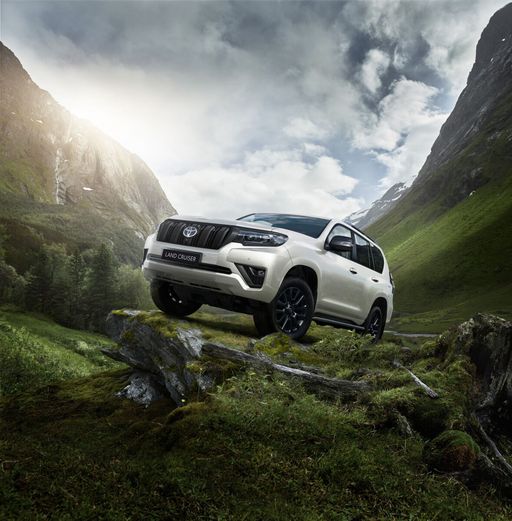 @ Toyota
@ Toyota
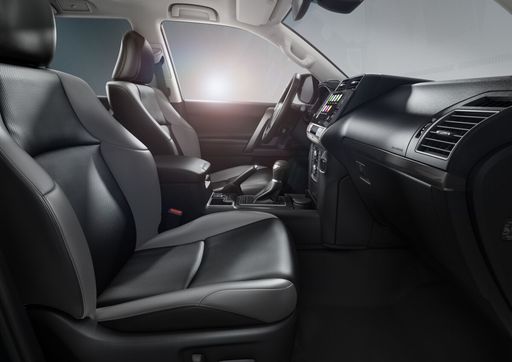 @ Toyota
@ Toyota
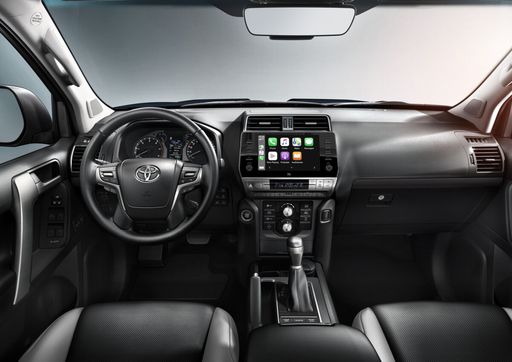 @ Toyota
@ Toyota
Mazda CX-5
The Mazda CX-5 exemplifies the perfect blend of style and practicality, offering a sleek design that turns heads while providing ample space for passengers and luggage. Its refined interior boasts high-quality materials and a user-friendly interface, making every journey a comfortable experience. With its engaging driving dynamics, the CX-5 delivers both performance and efficiency, appealing to drivers who crave excitement and reliability.
details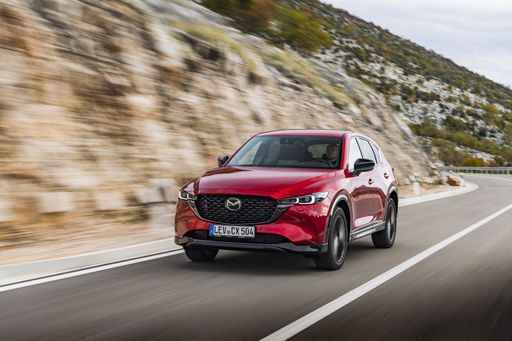 @ de.mazda-press.com
@ de.mazda-press.com
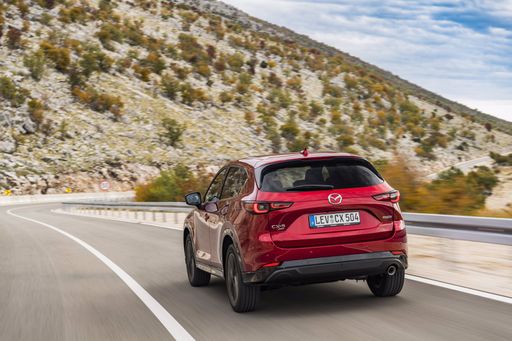 @ de.mazda-press.com
@ de.mazda-press.com
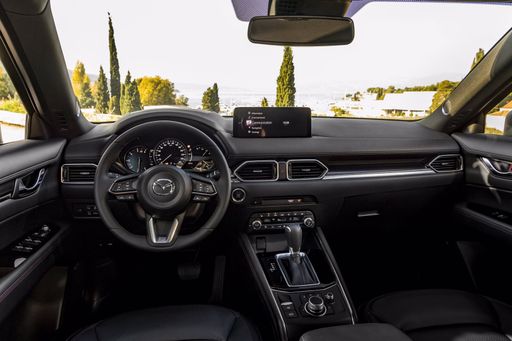 @ de.mazda-press.com
@ de.mazda-press.com

|

|
|
|
|
Costs and Consumption |
|
|---|---|
|
Price
58300 - 78400 £
|
Price
27600 - 44300 £
|
|
Consumption L/100km
10.30 L
|
Consumption L/100km
5.6 - 7.6 L
|
|
Consumption kWh/100km
-
|
Consumption kWh/100km
-
|
|
Electric Range
-
|
Electric Range
-
|
|
Battery Capacity
-
|
Battery Capacity
-
|
|
co2
272 g/km
|
co2
146 - 173 g/km
|
|
Fuel tank capacity
80 L
|
Fuel tank capacity
56 - 58 L
|
Dimensions and Body |
|
|---|---|
|
Body Type
Off-Roader
|
Body Type
SUV
|
|
Seats
5
|
Seats
5
|
|
Doors
5
|
Doors
5
|
|
Curb weight
2410 - 2550 kg
|
Curb weight
1567 - 1800 kg
|
|
Trunk capacity
130 - 742 L
|
Trunk capacity
510 - 522 L
|
|
Length
4925 mm
|
Length
4575 mm
|
|
Width
1980 mm
|
Width
1845 mm
|
|
Height
1935 mm
|
Height
1680 mm
|
|
Payload
600 - 690 kg
|
Payload
434 - 508 kg
|
Engine and Performance |
|
|---|---|
|
Engine Type
Diesel
|
Engine Type
Petrol MHEV, Diesel
|
|
Transmission
Automatic
|
Transmission
Manuel, Automatic
|
|
Transmission Detail
Automatikgetriebe
|
Transmission Detail
Manual Gearbox, Automatic Gearbox
|
|
Drive Type
All-Wheel Drive
|
Drive Type
Front-Wheel Drive, All-Wheel Drive
|
|
Power HP
205 HP
|
Power HP
150 - 194 HP
|
|
Acceleration 0-100km/h
-
|
Acceleration 0-100km/h
9.2 - 11.1 s
|
|
Max Speed
170 km/h
|
Max Speed
188 - 208 km/h
|
|
Torque
500 Nm
|
Torque
213 - 445 Nm
|
|
Number of Cylinders
4
|
Number of Cylinders
4
|
|
Power kW
151 kW
|
Power kW
110 - 143 kW
|
|
Engine capacity
2755 cm3
|
Engine capacity
1998 - 2488 cm3
|
General |
|
|---|---|
|
Model Year
2024
|
Model Year
2021 - 2022
|
|
CO2 Efficiency Class
G
|
CO2 Efficiency Class
E, F
|
|
Brand
Toyota
|
Brand
Mazda
|
Toyota Land Cruiser
Introducing the Toyota Land Cruiser: A Legend Reinvented
The Toyota Land Cruiser is a name synonymous with reliability, durability, and off-road prowess. The latest iterations continue this legacy while incorporating cutting-edge technology and refined engineering to meet the demands of modern adventurers. Whether you're navigating rugged terrains or cruising city streets, the Land Cruiser promises an unparalleled driving experience.
Innovative Engineering and Powertrain
Under the bonnet, the Land Cruiser offers a 2.8-litre D-4D diesel engine, delivering an impressive 204 PS. This robust engine ensures a blend of power and efficiency, capable of handling any terrain with ease. Available in both manual and automatic transmissions, the vehicle caters to a wide range of driving preferences. With a torque ranging from 420 to 500 Nm, it provides enough grunt to tackle the most challenging conditions.
Performance and Efficiency
The Land Cruiser exhibits remarkable performance, accelerating from 0 to 100 km/h in just 9.9 seconds in select variants. Despite its formidable capabilities, the vehicle manages to maintain a commendable fuel consumption rate, ranging from 8.7 L/100km to 13.4 L/100km, depending on the configuration. The model achieves a maximum speed of 175 km/h, demonstrating its competence on both highways and off-road trails.
Design and Dimensions
Standing at a length between 4395 mm and 4920 mm, the Land Cruiser strikes a balance between robust stance and practical urban driving. Its width ranges from 1885 mm to 1980 mm, and it features a height between 1830 mm and 1870 mm. The SUV offers both three-door and five-door configurations, accommodating diverse lifestyle needs. Its spacious interior can be configured to seat between five to seven passengers, ensuring comfort on long journeys.
Off-Road Capability and Utility
Renowned for its off-road credentials, the Land Cruiser is equipped with a sophisticated all-wheel-drive system. It features a high ground clearance, allowing it to traverse uneven terrains without difficulty. The vehicle's payload capacity ranges from 495 kg to 770 kg, and its ample boot space — ranging from 104 L to 1151 L — caters to adventurous excursions as well as everyday practicalities.
Technological Features and Innovations
The latest Land Cruiser models are outfitted with advanced technological features designed to enhance both comfort and safety. From state-of-the-art infotainment systems to cutting-edge driver assistance technologies, this SUV ensures a connected and secure driving experience. With a range of trim levels available, including Executive and First Edition variants, the Land Cruiser offers a suite of luxury amenities tailored to discerning drivers.
Sustainability and Environmental Considerations
While the Land Cruiser is engineered for performance, Toyota also takes environmental impact into account. The models feature CO2 emissions ranging from 227 g/km to 288 g/km and a fuel efficiency rating classified under CO2-efficiency class G. These efforts reflect Toyota's commitment to reducing the environmental footprint of its vehicles while delivering unparalleled capability.
Conclusion: A Timeless Companion
The Toyota Land Cruiser remains an indomitable force in the world of four-wheel drives, combining enduring reliability with modern innovation. Whether it's exploring untamed wilderness or making a statement on urban roads, the Land Cruiser stands as a testament to Toyota’s engineering excellence. For adventurers seeking uncompromised performance and luxury, the Land Cruiser is poised to be a steadfast companion for years to come.
Mazda CX-5
Experience the Mazda CX-5: A Blend of Style and Performance
The Mazda CX-5 is an outstanding example of how contemporary SUVs are redefining the driving experience by combining stylish design, advanced technology, and impressive performance. This compact SUV has continually evolved since its introduction, becoming a favourite among driving enthusiasts and everyday users alike. In this article, we'll delve into the technical details and innovative features that set the Mazda CX-5 apart from its competitors.
Powertrains and Performance: A Broad Spectrum of Choices
The Mazda CX-5 offers a plethora of engine choices tailored to meet diverse driving demands. The powertrains include both petrol mild-hybrid and diesel options, ensuring an optimal blend of efficiency and power. Engine capacities range from 150 to 194 PS, providing drivers with the flexibility to choose their desired level of performance. Whether cruising on highways or tackling rugged terrains, the CX-5 offers a balanced drive thanks to its fine-tuned suspension and steering dynamics.
Innovative e-SKYACTIV Technology
One of the standout features of the Mazda CX-5 is its proprietary e-SKYACTIV technology. This innovation is not only about enhancing fuel efficiency but also ensuring a cleaner emission profile. By integrating mild-hybrid systems with traditional combustion engines, Mazda optimises energy use during different phases of driving, such as acceleration and coasting, thereby enhancing overall efficiency without compromising on performance.
Driving Comfort and Cabin Features
Inside the Mazda CX-5, an array of advanced features fosters a premium driving experience. Depending on the trim level—ranging from 'Prime-Line' to the luxurious 'Takumi AWD SKYACTIV-Drive'—owners enjoy a wealth of connectivity and convenience functions. From adaptive cruise control to an immersive infotainment system, each trip promises to be as enjoyable as it is efficient. Additionally, the CX-5 boasts a generous boot space of up to 522 litres, ensuring ample room for long journeys or family outings.
Safety First: Advanced Safety Technologies
Safety is a paramount consideration in the engineering of the Mazda CX-5. Equipped with an array of advanced safety technologies, the vehicle is designed to protect its occupants and enhance overall safety on the road. Features such as lane-keep assist, blind-spot monitoring, and a comprehensive set of airbags ensure that the CX-5 is well-prepared for unforeseen challenges while driving.
Efficiency Meets Affordability
The various models of the Mazda CX-5 provide a spectrum of fuel consumption figures spanning from 5.6 to 7.6 L/100km, catering to drivers who are both economy-conscious and seek strong performance. With its CO2 efficiency classes rating between E and F, the CX-5 balances performance and responsibility. Offered at a price range from €32,190 to €51,700, the CX-5 positions itself as an attainable luxury within the SUV market.
Conclusion: The Mazda CX-5 Legacy
The Mazda CX-5’s blend of technological innovations, robust engines, and sleek design underscores its status as a top choice in the compact SUV segment. Its commitment to improving performance while maintaining fuel efficiency and safety makes it a compelling option for discerning drivers. As Mazda continues to push boundaries with cutting-edge technology and design, the CX-5 remains a testament to the brand’s dedication to creating vehicles that inspire and deliver an exceptional driving experience.
The prices and data displayed are estimates based on German list prices and may vary by country. This information is not legally binding.
